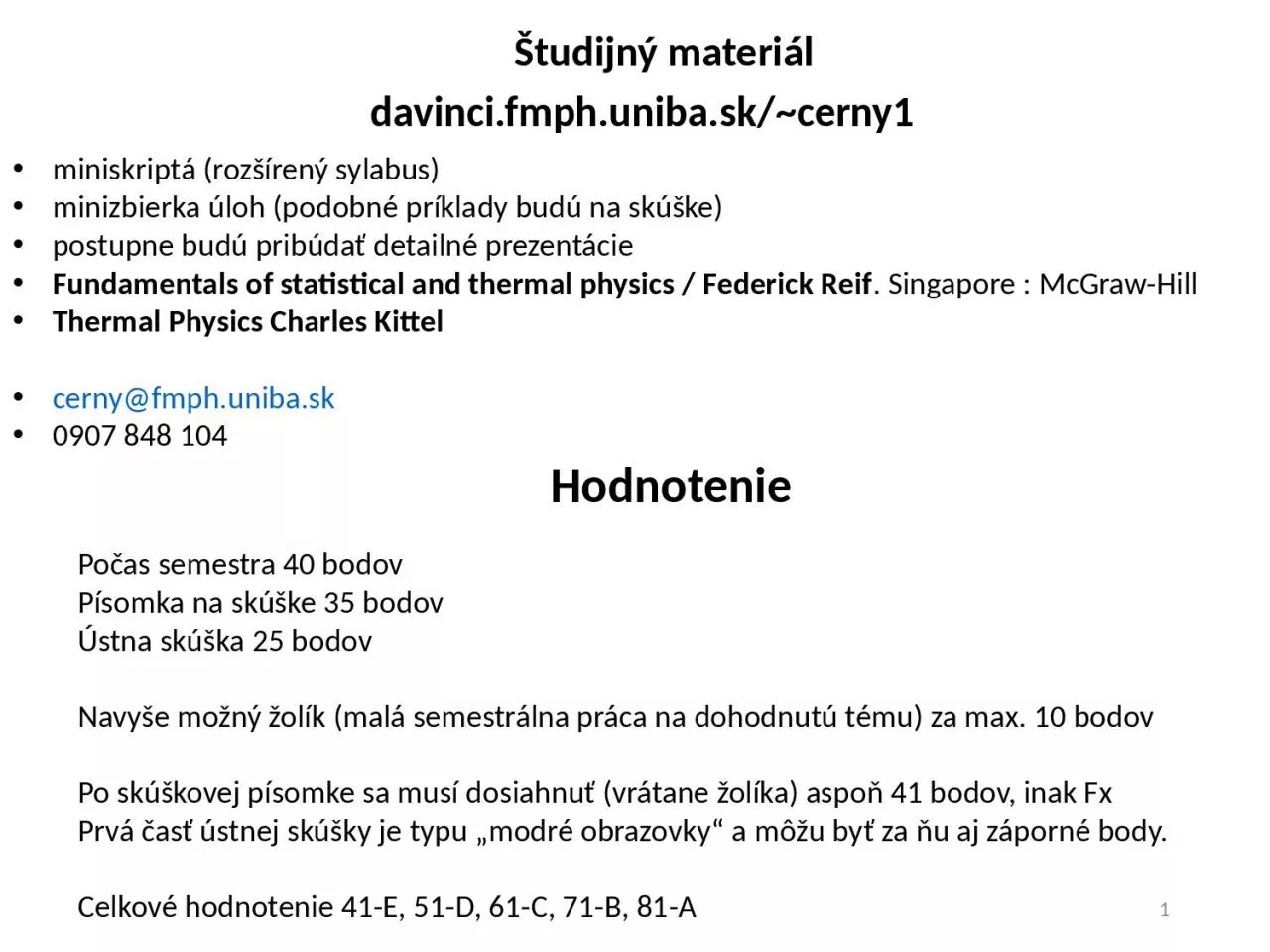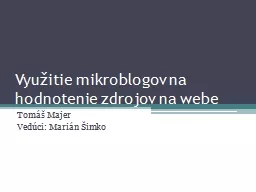PPT-1 Hodnotenie Počas semestra 40 bodov
Author : CountryBumpkin | Published Date : 2022-08-01
Písomka na skúške 35 bodov Ústna skúška 25 bodov Navyše možný žolík malá semestrálna práca na dohodnutú tému za max 10 bodov Po skúškovej písomke
Presentation Embed Code
Download Presentation
Download Presentation The PPT/PDF document "1 Hodnotenie Počas semestra 40 bodov" is the property of its rightful owner. Permission is granted to download and print the materials on this website for personal, non-commercial use only, and to display it on your personal computer provided you do not modify the materials and that you retain all copyright notices contained in the materials. By downloading content from our website, you accept the terms of this agreement.
1 Hodnotenie Počas semestra 40 bodov: Transcript
Download Rules Of Document
"1 Hodnotenie Počas semestra 40 bodov"The content belongs to its owner. You may download and print it for personal use, without modification, and keep all copyright notices. By downloading, you agree to these terms.
Related Documents




